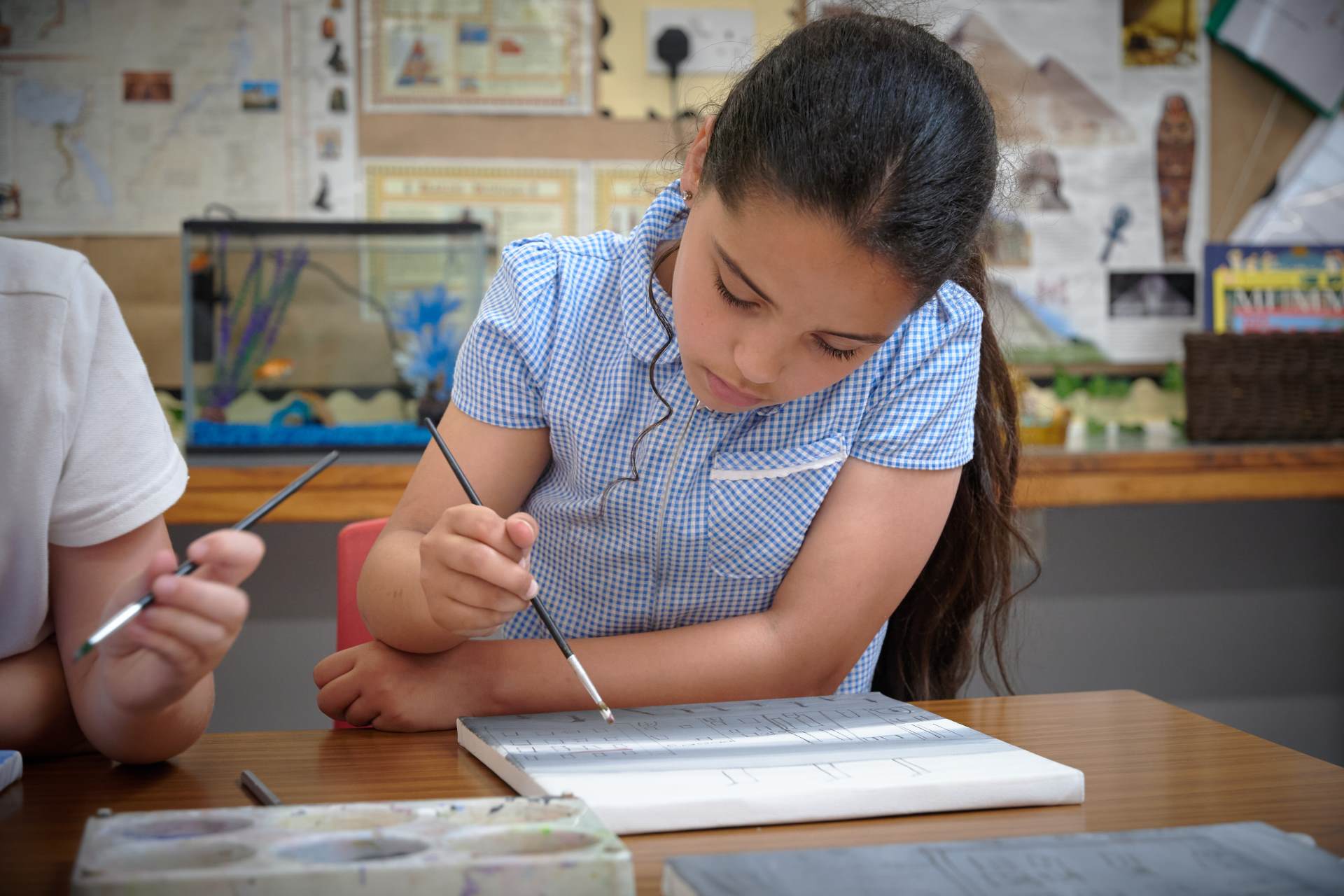Art

Intent
At Gilberdyke Primary School, it is our intention that the art curriculum is engaging, inspiring and challenging through its many forms: craft, painting, sketching, digital art, mixed-media and sculpture to name but a few dimensions.
It is our intent to provide all children with the fundamental skills, techniques and knowledge needed to independently create their own unique drawings, paintings, sculptures, and crafts. We want the children to have a natural sense of wonder and curiosity when studying a wide variety of artwork. In disciplinary terms, pupils are taught how quality and value have been expressed throughout history by asking and answering the fundamental question (in age-appropriate terms); What is art? In asking and answering this question, we empower children to discover and respond to great artists and traditional, contemporary and modern art forms, further broadening their minds.
We want to broaden our children’s minds and have an insight into how Art & Design has contributed to our culture and understanding of our history and the world through studying a range of artists and designers. The curriculum also considers different periods of history so that children can begin to notice the different eras of art. Children will be introduced to a range of works and develop knowledge of the styles and vocabulary used by famous artists. The children will have opportunities to take inspiration from these key artists and create their own artworks in their particular styles.
We give the children the time and space to explore new themes/media without the need to be perfect. At Gilberdyke, we believe that the process takes precedence over the product and this supports a key message for our pupils in remaining resilient. We want our children to see the enjoyment and satisfaction in the process of being immersed, thinking and behaving creatively and producing individual, paired or group pieces, bespoke to them.
The substantive knowledge that has been selected in Gilberdyke’s art and design curriculum is sequenced to establish coherent narratives and schema for pupils with the focus for each unit based around one of these four key disciplines which are revisited throughout their journey from EYFS to Y6:
- Drawing
- Painting
- Collage (EYFS to Y4)
- Sculpture
- Printing (Y5 & 6)
Pupils are given opportunities to revisit key disciplines and substantive knowledge they have studied through planned craft opportunities like making cards for specific events throughout the year.
Implementation
Art and Design at Gilberdyke is based on the national curriculum for key stages one and two. The curriculum starts in EYFS through exploratory concepts and planned development of practical knowledge (skills) to ensure that pupils are prepared for key stage one.
It is taught termly and teaching sequences are planned to be taught in a block of learning so that the build-up of substantive knowledge and skills can progress, uninterrupted, over a few whole days, rather than individual lessons taught weekly. The context and theme for art and design units is often based on other national curriculum subjects.
Each teaching sequence begins with the pupils being exposed to a selection of existing artwork, from different artists, across a variety of artistic movements. They continue to develop their disciplinary understanding of art being subjective and personal by discussing, ‘What is art?’ and evaluate the work of others, in order to inform their own designs. Pupils continue to broaden their substantive knowledge through the ‘making’ stage, in which specific skills and disciplines are taught linking to the intended outcomes for the unit of work. This knowledge is carefully sequenced so that progression and development of more sophisticated skills is embedded over the course of each child’s journey throughout the school. The application of their knowledge and skills is often showcased and celebrated when pupils complete their final ‘piece’. Children are then given time to reflect on the success of their skills application and evaluate identify any areas of improvement in the future.
Children have the opportunity within lessons to work on their own and collaborate with others on projects in two and three dimensions and on different scales.
Impact
At Gilberdyke, Art and Design is taught to develop imagination and creativity, pleasure and enjoyment and a sense of well-being; contributing to children’s personal development, in promoting independence and judgement whilst driving our resilience agenda so that pupils are self-assured in their creativity, despite the outcome.
Art and Design displays reflect the children’s sense of pride in their artwork and this is also demonstrated by creative outcomes across the wider curriculum.
Our assessment practice in Art and Design allows progress and knowledge to be regularly monitored and evaluated. Adaptations are made to future teaching sequences throughout the year as a result of the checks which occur at the end of every concept taught.



